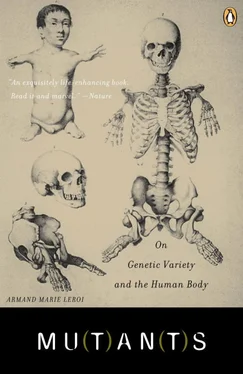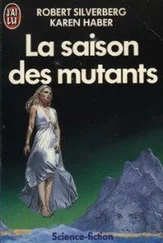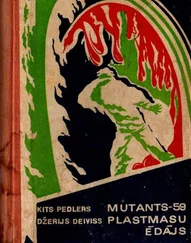One of the strange things about limbs is how easy it is to compensate for their absence, either partial or entire. As the patriarch of one ectrodactylous family replied to a geneticist: ‘Bless ‘e, sir, the kids don’t mind it. They never had the use o’ fingers and toes, and so they never misses ‘em.’ Indeed, why should they? They could hold their own at school in writing, drawing and even needlework. Among the adults, one was a bootmaker, one drove a cab, and another had a party trick in which he picked up pins from the floor using his two opposable toes.
The neural and physical versatility of limbs is even more striking in people who lack upper limbs altogether. Among the most engagingly feisty of all armless artists was Hermann Unthan, ‘The Armless Fiddler’. Born in 1848 in a small German town, he narrowly escaped smothering by an infanticidal midwife, and was raised by his strict but loving parents on a diet of self-reliance that now seems positively heartless. Within days of his birth, his father ordered that his son was never to be pitied, never to be helped, and was not to be given any shoes or socks. By 1868 the young Hermann was giving violin recitals to delighted Viennese audiences as the younger Johann Strauss conducted. In the course of his long and varied life he travelled widely, finally coming to rest in the United States, which he loved. At the age of eighty he wrote his autobiography, aptly titled The armless fiddler: a pediscript , with his toes and an electric typewriter. This sort of neural flexibility is common in mammals. Among the anatomical wonders of the 1940s was a little Dutch goat that, born without fore-limbs, managed to get about bipedally, rather in the manner of a kangaroo.
The ability of animals to survive without their limbs has long proved useful to biologists. Limbs can be counted, dissected and manipulated on a living creature without the need to open the body. They are naked to the biologist’s gaze. This visibility means that, of all the devices that make the body, those that make limbs are now exceptionally well understood. Much is known, for example, about their most salient characteristic: the fact that they stick out from our bodies.
At day 26 after conception, the first signs of a foetus’s arms appear: two small bumps, one on each flank, just behind the neck. By analogy to the precursors of leaves or flowers, these bumps are called limb-buds. A day or so later, another pair of limb-buds forms further down the torso; they will become legs. Like any of the bumps on the surface of an embryo, limb-buds are at first just a bag of ectoderm filled with mesodermal cells. There are as yet no bones, muscles, tendons or blood vessels. The limb-bud remains in this amorphous state for about five weeks, at which time faint outlines of bones – the first signs of structure – begin to form. Even before that, however, the limb-bud has not been quiescent, because from nothing more than a small bump it has grown into an appendage about 2 millimetres long. On day 50 after conception, the embryo crouches and holds its newly formed hands over its heart. On day 56, it touches its nose.
What induces a limb-bud to grow out into space? In 1948 a young American biologist, John Saunders, gave an answer to this question. He had noticed that limb-buds were crowned by a ridge of unusual cells. The cells were clearly ectoderm – the tissue that covers the entire embryo – but at the tips of limbs they resembled tightly packed columns, quite unlike their usual pancake shape. Saunders dubbed this structure the ‘apical ectodermal ridge’ and then, curious to know more, decided to remove it.
As embryonic newts have been used to study the organiser, so chickens have been used to study limbs. Saunders operated on twenty-two foetal chickens, some young, others a little older. In each case he removed the apical ectodermal ridge from one wing-bud, while leaving the one of the other side intact. Having operated, he sealed up the egg and waited until the chicks hatched out. The operated wings all had a characteristic deformity: they were, to varying degrees, amputated. Chickens operated on when the limb-bud had just begun to expand showed severe amputations: they had at best a humerus (the bone closest to the shoulderblade), but below that, the radius, ulna, wrist bones and digits were all gone. Those operated on a little later had a humerus, radius and ulna, but lacked wrists and digits; later yet, only the digits were missing.
This experiment helps to explain why some infants, such as Hermann Unthan, are born without arms or legs. Our limb-buds also have apical ectodermal ridges, and sometimes they must surely fail. The ridges on Hermann’s arm-buds probably malfunctioned soon after they first appeared; perhaps they never appeared at all. Other human deformities resemble the less extreme amputations seen in chicks whose wing ridges are removed only late in their growth. In the Brazilian states of Minas Gerais, São Paulo and Bahia there are families who are afflicted with a disorder called acheiropody – from the Greek: a – absence, cheiros – hand, podos – foot. Instead of hands and feet, the victims of this disorder have limbs that terminate in a tapered stump. They get about by walking on their knees and are called by the locals aleijadinhos , or ‘little cripples’. The disorder is caused by a recessive mutation, probably quite an old one since it appears in more than twenty families, all of Portuguese descent. Because the mutation is recessive, only foetuses who have two copies of the mutant gene fail to develop hands and feet. Having two copies of a mutation is usually a sign of inbreeding: the first family of aleijadinhos ever studied were the children of a Peramá couple who were – local opinion varied – either full siblings, half siblings, or else uncle and niece.

ACHEIROPODY. AN ALELJADINHO, BRAZIL, 1970s.
The apical ectodermal ridge is the sculptor of the limb. As the development of the limb-bud draws to a close, the ridge regresses, leaving behind an outline of our fingers and toes. Should it be damaged in any way, the consequences will be visible in the limb’s final form. The ectrodactylous hands of the Wigtown cleppies were the result of a mutation that caused a gap in the middle of the ridge, and so a gap in the middle of the forming limb. Mutations in at least four different genes are known to cause ectrodactyly, but it is quite possible that more will be discovered.
What gives the ridge, which is little more than a clump of cells, such power over the shape of a limb? The most obvious explanation would be that the cells making up the tissues of the limb – bone, sinew, blood vessels and so on – have their origin in the ridge. But this is not the case. All of these tissues are made of the mesoderm that lies beneath the ridge rather than the ridge itself; only the skin is ectoderm. The obvious alternative is that the ridge matters not as a source of cells, but rather as a source of information: it tells mesoderm what to do.
Action at a distance in the embryo usually implies the work of signals, and so it is in the limb-bud. Apical ectodermal ridges are rich in signalling molecules, especially so in one family of them: the fibroblast growth factors or FGFs. The experiment that identified FGFs as the source of the ridge’s power began with the surgical extirpation, à la Saunders, of the apical ectodermal ridge from the tip of a young wing-bud. The denuded bud was not, however, allowed to grow up into the usual amputee wing. Instead, a silicone bead soaked in FGF was placed on its tip, more or less where the ridge would be. The result was a fully-grown limb – one cured, if you will, by the application of a single protein. Twenty-two genes in the human genome encode FGFs, of which at least four are switched on in the ridge. No one knows why so many are needed there, but collectively they are vital to the workings of the ridge. It would be an exaggeration to say that to grow a leg or an arm one needs only a little FGF, but clearly a little goes a long way.
Читать дальше













